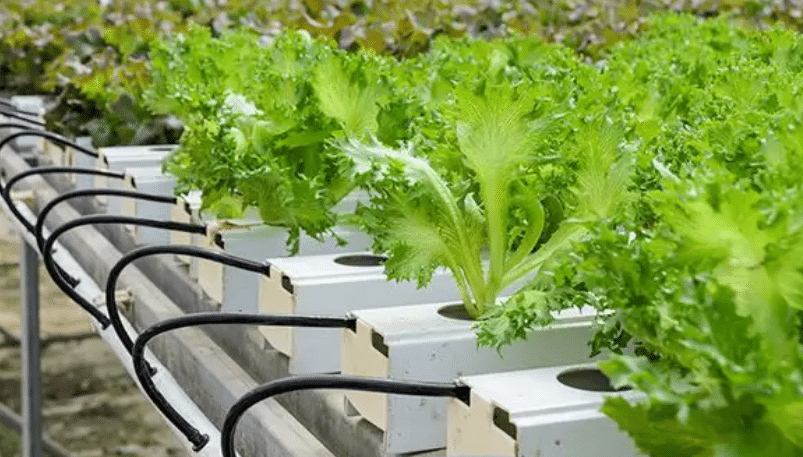What is EC?
Electrical conductivity or “EC” is a measure of the concentration of “total salt” in a nutrient solution (drip, plate or drain).
It is expressed as milliSiemens per linear centimeter (mS/cm) or microSiemens per linear centimeter (mS/cm), where 1mS = 1000µS. The conductivity of a given solution varies with temperature, so most nutrient solution analyses are performed at 20oC.
The higher the concentration of “total salt” in the substrate, the higher the EC. Inorganic fertilizer ions such as N, P, K, Ca, Mg, etc. are examples. Urea is an organic molecule and will not contribute to the EC of the solution because it does not conduct electricity like calcium (Ca) ions or nitrates. Nitrogen (NO3-N) ions can.

The EC required for optimal plant growth depends on the crop and variety grown, the physiological stage of plant development and the prevailing environmental conditions inside and outside the greenhouse.
EC Unit Explanation
Siemens (S) : Siemens is the international unit of conductivity, indicating the ability to conduct electricity when a current passes through a substance. 1 Siemens (S) indicates the ability to conduct electricity when a voltage of 1 volt causes 1 ampere of current to pass through an object.
Millisiemens (mS) : Millisiemens is one thousandth of Siemens, that is, 1 mS = 0.001S.
Micro Siemens (μS) : Micro Siemens is one millionth of Siemens, that is, 1 μS = 0.000001 S.
Common EC Value Ranges
- Purified water or deionized water: The EC value is very low, generally in the range of 0.05-0.1 mS/cm.
- Tap water: Due to the dissolved salts in tap water, the EC value is usually 0.2-0.8mS /cm.
- Hydroponic nutrient solution: In the general hydroponic system, the EC value should be in the range of 1.5-3.0 mS/cm, and the specific value is adjusted according to the different plant species and growth stage.
Why is it important to monitor EC?
The EC of the nutrient solution affects the growth and development of the plant. In the winter, higher EC is used because it limits water uptake. As a result, the cells in the plant do not elongate or “grow” too much. They stay smaller and have thicker, stronger cell walls. The plants then look darker, shorter and have smaller leaves. In this case, the plant puts relatively more energy into the formation of flowers and fruits (a production reaction). If the EC is too low under poor light conditions (i.e. winter), the plant will produce too much leaf growth and too little fruit growth, and will therefore be over-nourished.
Conversely, high EC under high light conditions (summer) will restrict water uptake too much and thus limit the plant’s ability to cool itself through transpiration. As a result, the crop will be stressed.
EC also affects yield and fruit quality. In general, higher EC in the root zone environment leads to lower yields and smaller fruit size. This is because the cells in the fruit absorb less water, resulting in lower fresh weight. However, higher EC leads to better fruit flavor. Therefore, a compromise must be made between fruit quality, yield, and the nutritional and reproductive development of the crop.
Therefore, it is important to maintain the correct EC in the root zone environment (measured as the difference between slab EC and drip EC.) The value of EC varies for each crop type and time of year.
Monitoring EC in the slab
Monitoring EC in plates is an important component of weekly nutrition monitoring and should be performed daily. For a meaningful and accurate assessment, sampling should be performed in multiple representative plates. Sampling is easy by simply pushing a syringe into the plate and withdrawing a small amount of nutrient solution (100 ml), which is then placed into the cup of the EC meter for direct reading. The EC values are calculated and plotted on a graph so that trends can be more easily identified.
A conductivity meter is an instrument specifically designed to measure the concentration of dissolved substances in water. It usually consists of a probe, an electrode and a display screen.
Common EC Measuring Instruments
- Portable EC meter: suitable for quick on-site inspection, lightweight and easy to use.
- Benchtop EC meter: Suitable for laboratory environments with high accuracy.
- Multi-parameter analyzer: In addition to measuring EC, it can also measure multiple parameters such as pH value and dissolved oxygen at the same time.
Tips for accurate EC measurements with portable meters
- Calibrate the EC meter periodically using a standard solution.
- Check the battery status, low battery in portable EC meters is often the cause of errors.
- Take measurements at the same time each day so that results can be interpreted more easily.
- Store the meter in a cool, dry place.
Cleaning and Maintenance
After each measurement, it is necessary to clean the probe of the conductivity meter in time so that the residue of the last measurement will not affect the accuracy of the next test. The probe can be cleaned with deionized or distilled water and dried with a clean cloth.
Monitoring and Adjustment
Based on the measured EC value, it can be decided whether the nutrient solution concentration or pH in the hydroponic system needs to be adjusted. For example:
- If the EC value is high, the nutrient solution concentration may be too high and a diluted water solution is required.
- If the EC value is low, it indicates insufficient nutrients in the water and the need to add fertilizer or nutrient salts.
Read more:
Conductivity: How to convert mS/cm to uS/cm
Difference between conductivity(EC) and TDS
What is residual chlorine?
What is turbidity?
